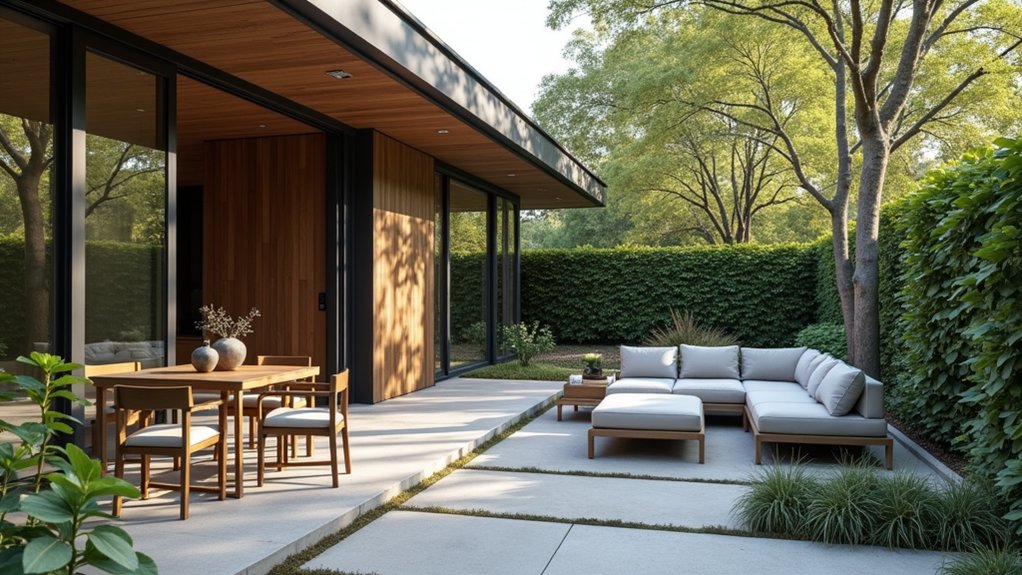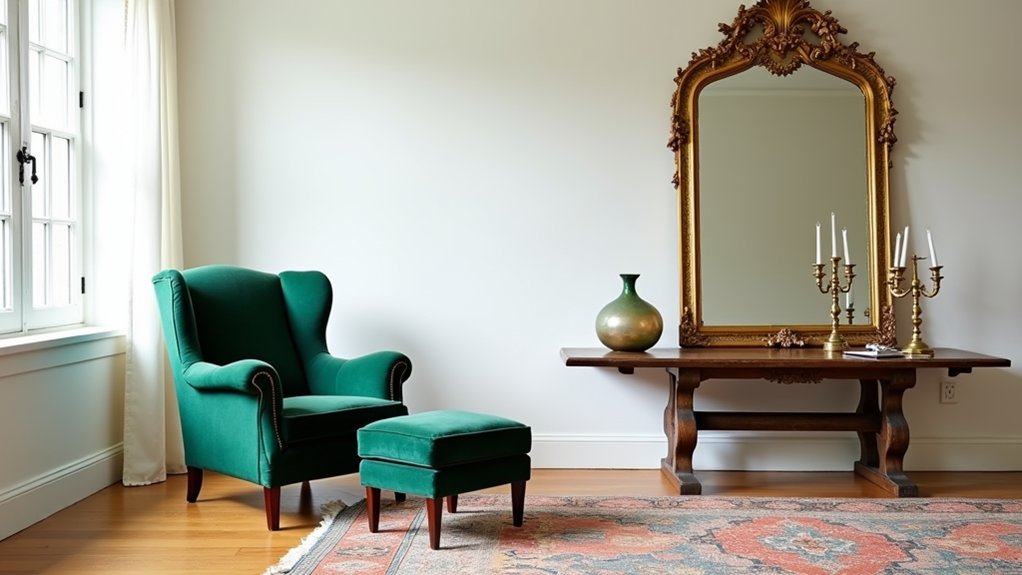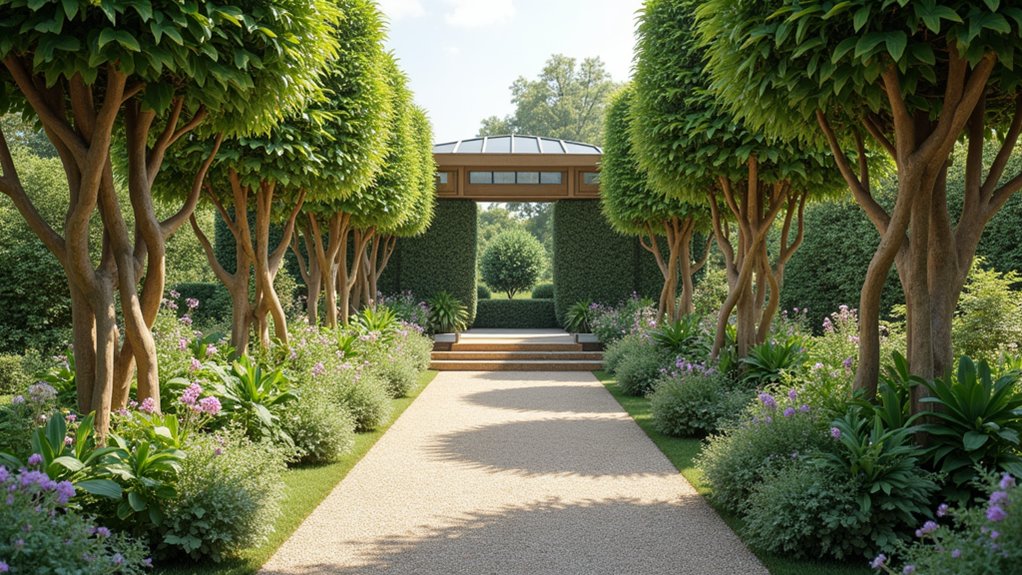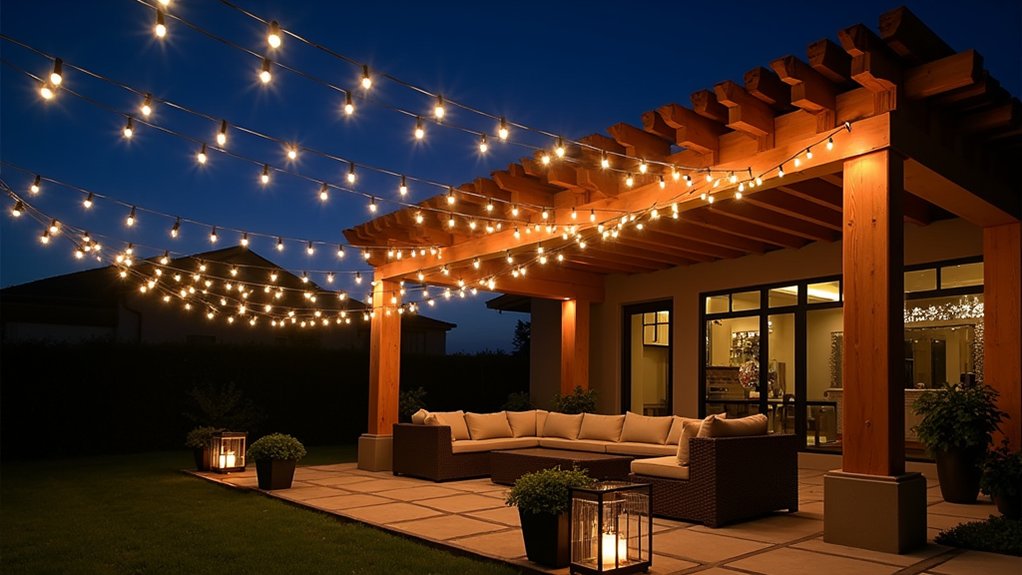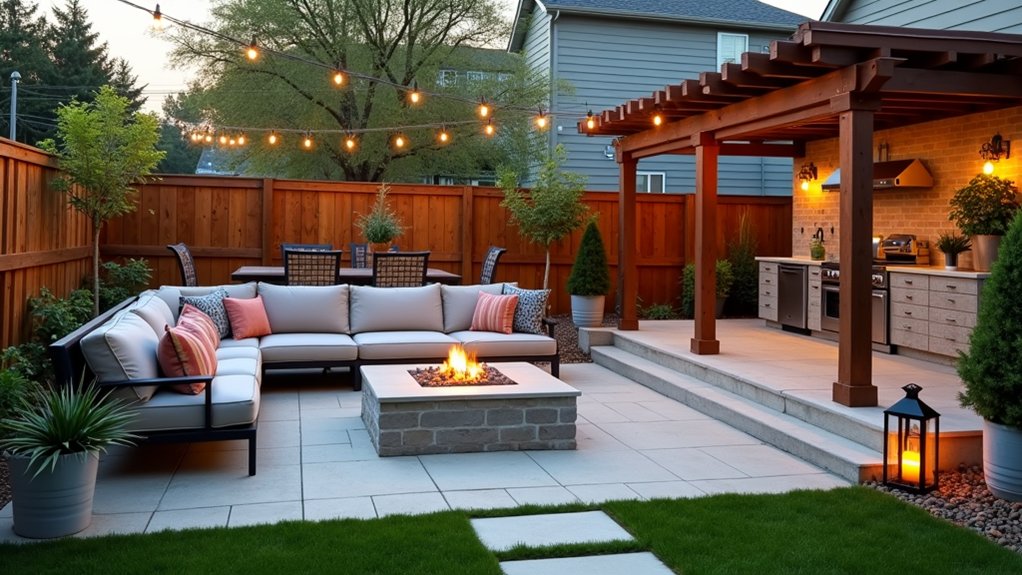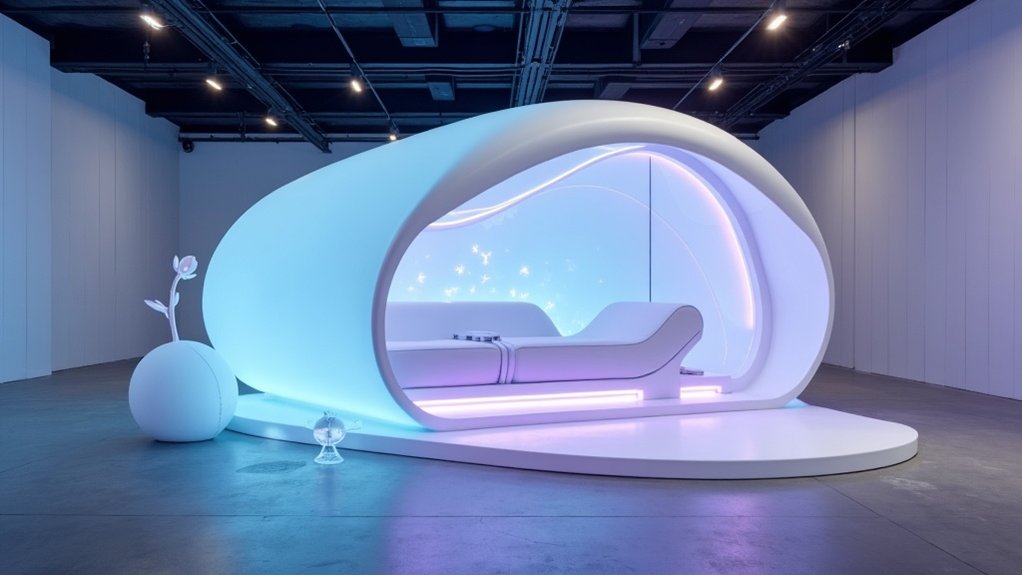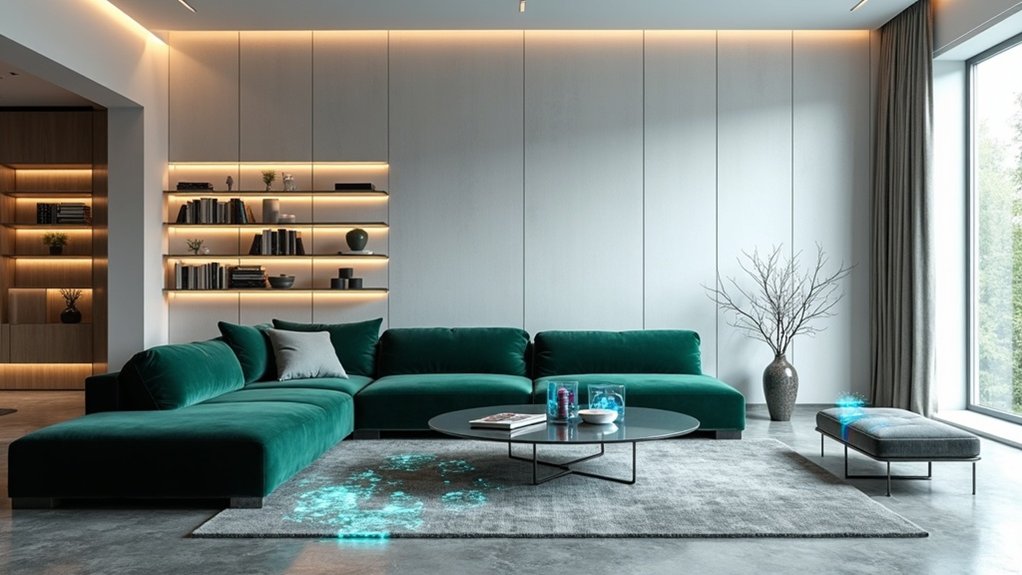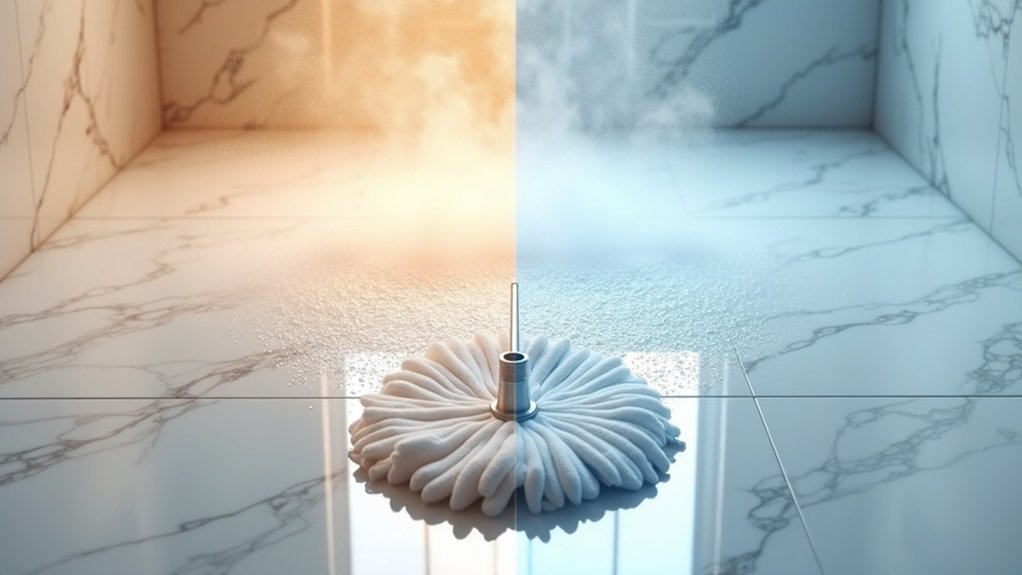As homeowners and designers alike shift away from dated exterior styling approaches, several once-popular outdoor trends are rapidly falling out of favor in 2025. Leading designers are particularly critical of matching furniture sets, which they say create a flat, showroom-like atmosphere that lacks personality. Instead, they advocate for thoughtfully mixing materials and textures, such as pairing powder-coated metal chairs with vintage teak tables to achieve a more collected, layered aesthetic. Smart lighting systems are revolutionizing how homeowners control and customize their outdoor ambiance.
Designers now favor eclectic furniture combinations over matching sets, creating unique outdoor spaces that reflect personal style and thoughtful curation.
The era of all-gray everything is drawing to a close, with designers embracing warmer, more organic color palettes. Earthy tones like terracotta, olive green, and warm taupe are replacing monochromatic gray schemes, bringing depth and natural sophistication to outdoor spaces. Low-quality plastic wicker furniture diminishes the luxurious appeal of outdoor living areas. This shift reflects a broader move toward timeless design elements that complement rather than compete with the natural environment.
Heavily themed seasonal decorations are giving way to more subtle, sophisticated styling approaches. Design professionals now emphasize quality over quantity, favoring versatile pieces that can transition seamlessly between seasons. This philosophy extends to the relationship between indoor and outdoor spaces, where the traditional boundaries are increasingly blurred through retractable glass walls and interconnected flooring choices that create visual continuity.
Environmental consciousness is reshaping outdoor design fundamentals, with water-intensive landscaping rapidly becoming obsolete. Drought-resistant native plants and smart irrigation systems are replacing traditional lawns, while sustainable materials take center stage in structural elements. Recycled composites, reclaimed wood, and repurposed stone are becoming standard choices for pergolas, patios, and decking.
The concept of single-purpose outdoor areas is likewise being reimagined, as homeowners seek spaces that can adapt to multiple functions. Modern outdoor designs increasingly incorporate features that support various activities, from sophisticated outdoor kitchens to wellness-focused elements like cold plunge pools.
This versatility reflects a growing understanding that outdoor spaces should be as dynamic and multifaceted as their indoor counterparts, capable of accommodating both daily living and special occasions with equal efficiency.
